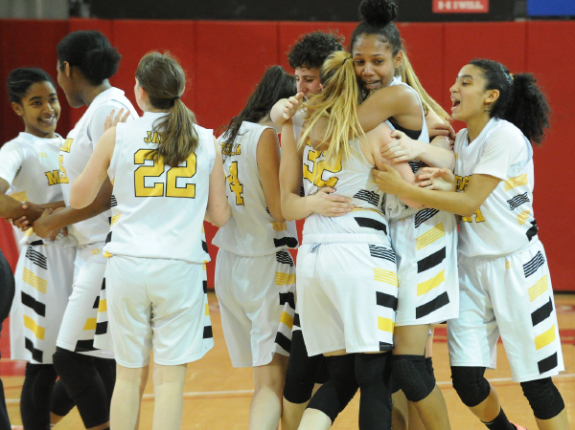Helping coaches, youth sports leaders, students, and others overcome myths and barriers will help girls and women “breakthrough” in play and coaching. Here are common myths, barriers, and breakthroughs to get girls and women in the game!
Attitudes that limit girls’ sports experiences and physical activity access can be re-examined and updated.
Myth: Girls don’t want to play sports. In fact, girls want to play sports and enjoy sports, plus related physical activities. Some adults, families, and youth sports leaders may not realize just how much girls are interested in sports and physical activity (a lot!) and may presume girls aren’t up to playing. When youth sports programs and physical activities are welcoming and equitable, girls want to play! Check and adjust personal, family, community, and institutional attitudes to recognize that girls and women want to get in the game.
Myth: Girls “drop out” of sports. While there are studies discussing girls “dropping out” of sports, especially in adolescence, consider that girls want to stay in sports but are facing a mix of internal and external structural barriers that can be removed (e.g., limiting gender stereotypes and conceptions of femininity; family obligations, physical and emotional safety concerns, transportation and cost issues, self-confidence, and negative messages). These issues can easily be countered and removed!
Barrier: Girls and women lack opportunity.
Girls want to play, and women want to coach in far higher numbers. Girls in the park and recreation community sports are often roughly one-third of athletes or fewer, and in the school context, are roughly 40% of athletes. Women make up approximately 25% of youth coaches overall. We know girls want to play in far higher numbers, and women are very interested in more coaching roles and; thus, we can get more girls and women into the game with perseverance!
Best Practices (Breaking Through Myths and Barriers)
- Thoughtfully design and persistently implement girl-centered youth sports programs that accommodate and support girls. Be persistent, as growing successful programs takes time.
- Assess what girls want to play to attract and retain girls. Survey girls, their families, and girl-serving sports programs to find out what sports are of interest to girls, what’s working, what’s not, and what adjustments need to be made. Use data (e.g., girls’ input from surveys).
-
Involve caregivers of girls in the equation. Offering girls’ sports programs works, especially if the parent/guardian of the girl is supportive, aware of the benefits of sports (e.g., lifelong health, later employment success), and up-to-date on when / how the sport offering is made, such as location, financial aid, adult supervision, facility safety). Connect to caregivers.
-
Loop in all stakeholders to help girls’ sports succeed. If you’re a coach, sports leader, or parent/ guardian of a girl, note many different entities are key to making girls’ sports thrive (e.g., permitting staff, city council, school leaders, boys’ teams sharing space, and others).
-
Ensure mental and physical safety, well-being, and comfort of girls playing. For example, ensure sport facility bathrooms are in good order, lockable, and safe. Also, clear a girls’ field or court of others during practices and games to afford girls physical and mental space.

